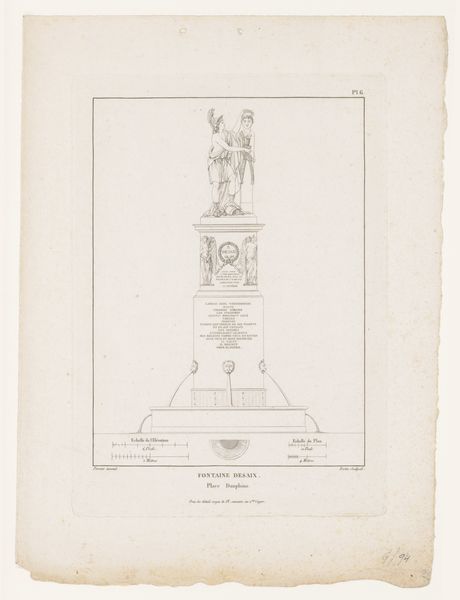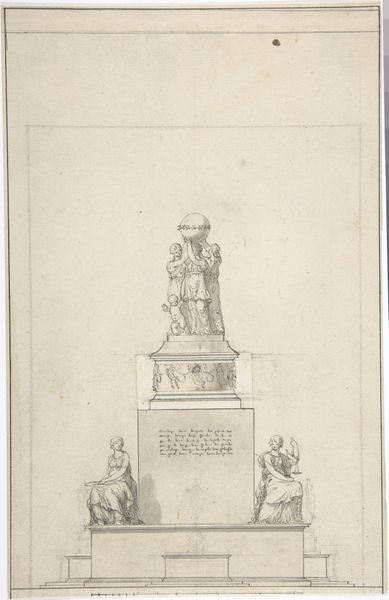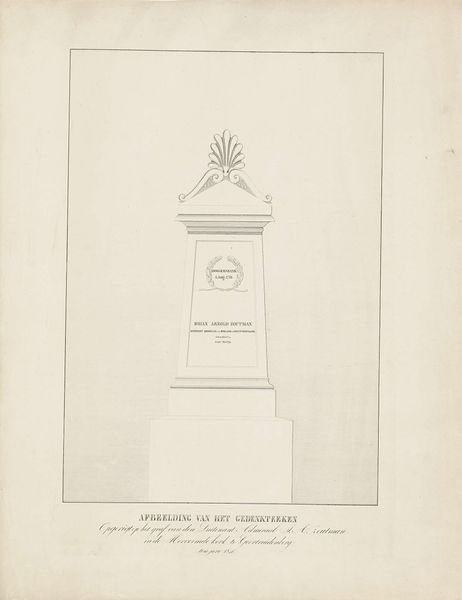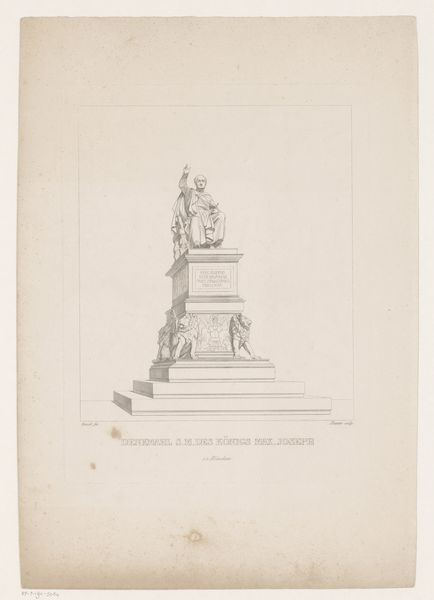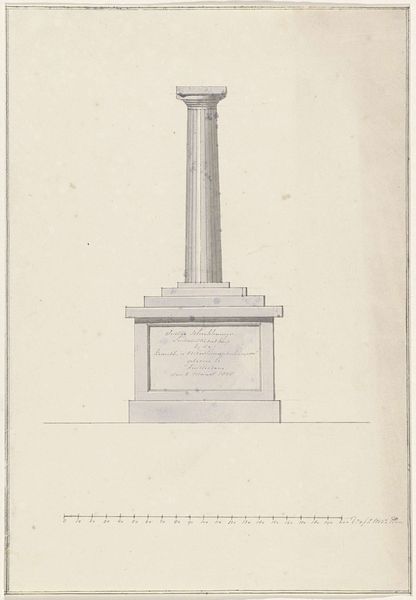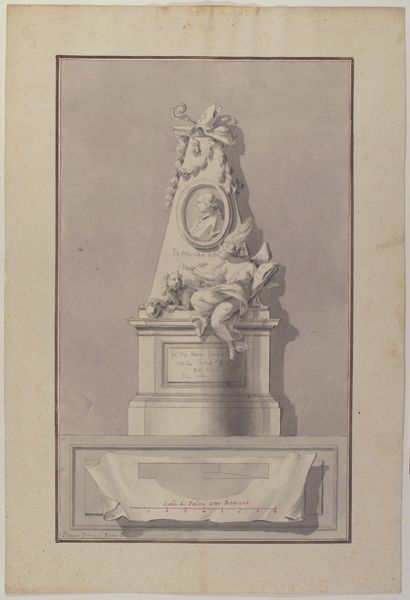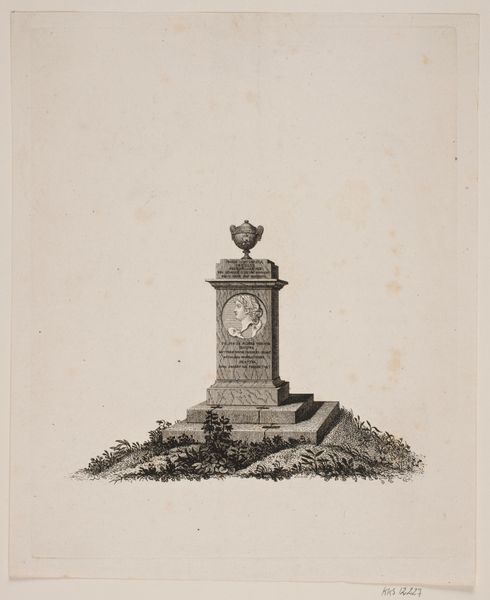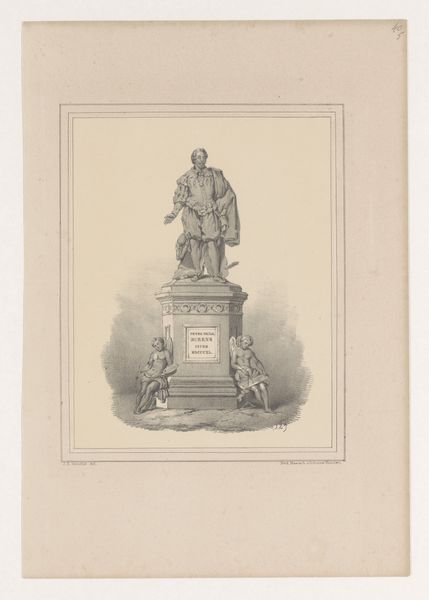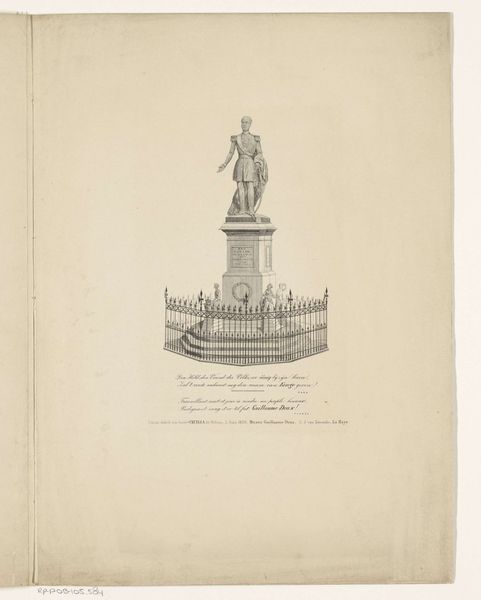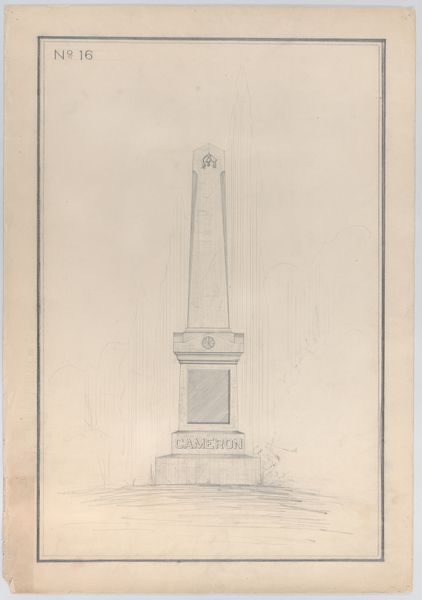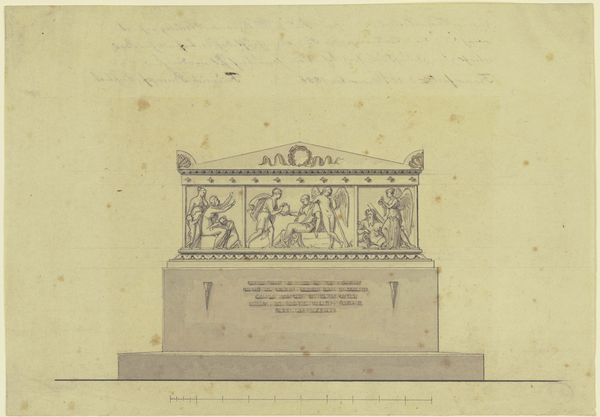
drawing, print, pencil, architecture
#
drawing
#
neoclacissism
# print
#
geometric
#
pencil
#
france
#
line
#
history-painting
#
architecture
Dimensions: 9 13/16 x 7 1/16 in. (25 x 17.9 cm.)
Copyright: Public Domain
Curator: Here we have Charles Percier's design for the Fontaine Desaix, a print executed in pencil, pen, and brown ink on paper some time between 1764 and 1838. Editor: It strikes me as a somewhat severe proposal. The lines are so clean, almost aggressively geometric. What was its intended function? Curator: It was intended as a memorial, of course. This neoclassical design aimed to commemorate General Desaix, situating him within a pantheon of revolutionary heroes. The fountain blends patriotic symbolism with classical ideals. Think of it as a statement piece, reflecting France's aspiration to be seen as a modern, enlightened republic, building upon a Roman aesthetic of strength. Editor: The use of line is indeed compelling, and one can imagine how this drawing would become something made of stone. This layering and incising creates the appearance of great heft and structure, which communicates a social hierarchy rooted in these neoclassical materials. I'm curious about the technical execution of such a monumental structure in its final built form. Curator: The fountain as a civic symbol also intersects with questions of social order. This aesthetic was intended to reflect French cultural dominance as the design features references to Greco-Roman virtue. Desaix became an object lesson on bravery in the Republic at that time. Editor: Right, because beyond its artistic merits, this drawing is a proposal about labor, resources, and the very idea of permanence within political discourse. How were decisions about its material translation—stone type, methods of quarrying, the specialized labor of stonemasons—linked to its intended message? It looks as if the production required to enact this plan would need to be incredibly elaborate. Curator: Exactly! These pieces were potent signifiers in revolutionary France. And by studying it now, we consider how that vision attempted to inscribe itself into the very landscape of French identity. Editor: It's fascinating to consider the layered meanings inherent within this seemingly simple pencil drawing: from initial sketch to completed monument and social artifact. Curator: It underscores, in the end, the potent entanglement of politics and aesthetics during times of upheaval, doesn't it?
Comments
No comments
Be the first to comment and join the conversation on the ultimate creative platform.
